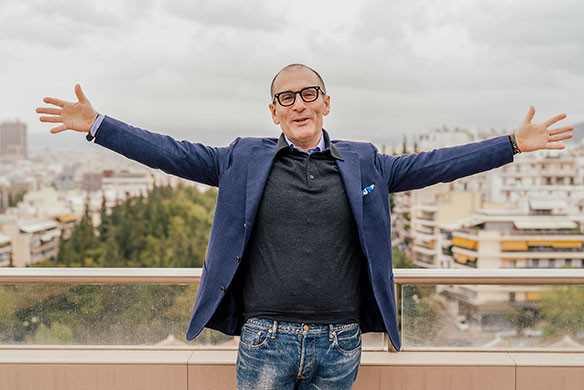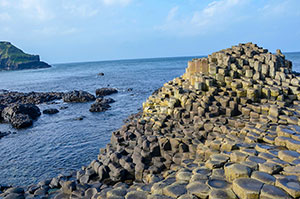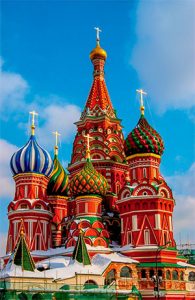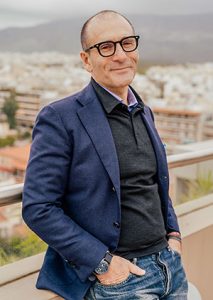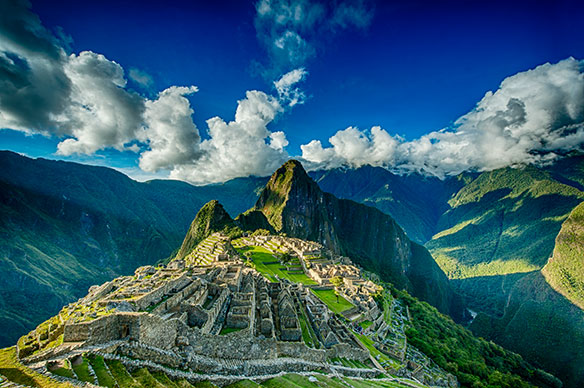
Combatting over tourism
ANN RUPPENSTEIN
The recent decision to halt tourism for six months on the island of Boracay, which the Head of State
of the Philippines dubbed a “cesspool,” has reignited warning bells about the potential pitfalls of over tourism.
With tourism being the livelihood for many people and economies around the globe, for Trafalgar’s Global CEO, Gavin Tollman, the situation is not only a worst-case scenario, but a stark warning for just how bad things can get if no action is taken.
“We’ve got to be cautious, for those of us in tourism itself,” he tells Canadian Travel Press. “We have to be able to sustain and work with the communities we visit. You cannot just show up and take a photo or be what I’ve come to term ice-cream tourists of the world.”
Since the tourism industry creates jobs and has the potential to lead to long-term sustainable economic growth, he says the focus should be on finding ways of travelling right in the first place so destinations that thrive on tourism never have to take such drastic measures.
As a means of aiding long-term tourism management and combatting over tourism, Tollman has developed a three-step solution those within the travel industry can utilize to start making change today:
1) Dissemination. Working to ensure that tourism is spread overthe entire year in order to sustain businesses for the long term. “It cannot just be seasonal, and that’s all about sustainability, so year-round tourism,” he says.
2) Dispersal. Encouraging discovery beyond the bottlenecks of major cities and tourism centres. “It’s going out in the true communities, going beyond just the iconic, really getting the essence of the places we go,” he says. “So going into smaller, lesser-known villages and having a greater impact by helping those communities.”
3) Direct action. “Taking preventative measures at this very moment to mitigate risk,” he says. “And what does that require? Direct conscious thought. This does not happen organically. You’ve got to stop and look at the places you go, the things you are doing within those places and make a difference to them now.”
Citing the Giant’s Causeway in Ireland as a prime example of tourism management, he says the UNESCO World Heritage Site went from struggling to cope with an influx of visitors to welcoming one million visitors in 2017 with the creation of a new sustainable visitor centre to help manage the flow of travellers.
“This is all about preservation not elimination,” he says. “If we take those actions now, we can make a difference, and it’s really that of prevention than having to help them recover in the future.”
COME TO LIGHT
Calling it “one of the most important facts in tourism today,” Tollman says the issue of over tourism came onto his radar two years ago when he was in Sorrento talking to a family friend who had advocated to bring cruise ships to the Italian destination.
“He said all that happens is we are left picking up garbage, and the entire contribution here is you get people who come in and they either have an espresso or have an ice cream and leave, and not only do they leave, they leave their garbage behind,” he says.
“It really struck me.”
When on that very same trip, he wound up having a similar conversation with someone in Venice, he realized this was something that needed to be dealt with.
“Unless we’re able to fundamentally change this trajectory where we can have or seem to be understood for the positive impact that you should have through tourism, we are in trouble,” he says. “Not all tourists are alike, and not everyone should be painted with the same brush stroke.”
ON TRENDS
As for trends within the travelscape, he points to the desire for travellers to understand the cultures that they’re visiting, which ties in with the idea of dispersal.
“Just not superficially, but actually getting to the very heart and the very essence of it,” he says. “It’s not just going into the major city, but working with the local communities where you can bring people in and actually understand it. That is what is so good for the long term and longevity of tourism itself.”
Jumping on between 10 and 15 tours annually, Tollman says he often gets the opportunity to engage and listen to Trafalgar’s guests. One thing he’s noticed is how travellers have become more interested in sustainable tourism and making a difference, which led the escorted holiday provider to start offering e-documents to guests.
“Of all of our guests scheduled to travel with us so far in 2018, just over 77% have opted for e-documents,” he says. “I think that brings the entire initiative into focus of how guests actually see when they do travel, they want to understand the destination. They want to have an impact on the destination, and they would like to do the right thing.”
Get to know the CEO
What was your first job?
My first job if you can actually believe it, I came to London, I was a young man growing up in South Africa, and my first job I did was running transfers London Heathrow Airport to the hotels of Trafalgar.
Did you always know you’d follow suit and go into travel?
Absolutely. Within our family, within the Toll-man family, travel, tourism is part of our DNA. If you sit at a family meal with us, we don’t distinguish between business and our personal life.
How often are you on the road?
The majority of my year is on the road.
What’s an important thing to keep in mind being in the travel industry?
Our business cycle is fun and exciting. If you are in this industry, we all have to remember we have a huge responsibility. Probably for our guests, the single most important decision they make is where they’re going to go on holiday this year. And so, they are really investing in you, and we take that responsibility incredibly seriously.
Do you tell people who you are when you jump on a Trafalgar trip?
It’s the first thing I do. I jump on usually for two days… At the end of the day, this is their holiday. I say this is your holiday, none of you signed up to meet me or even talk to me, but I’m intrigued I’d love to know how you booked, what made you choose, how many times you’ve travelled with us.
What are your perspectives, what can we do differently?
I never approach anyone, I say, if any of you want to approach me, I’m here to talk to you. I don’t know how many hundreds of trips I’ve been on over the last few years; all I know is, my dance card is never empty.
Can you share a travel memory that relates to giving back?
We were part of the Rhino projects, in the restoration of helping restore rhinos into Botswana, and one of my most impactful memories was being there and seeing a rhino that was from South Africa being released into the wild in Botswana. Being part of that entire undertaking was pretty remarkable.
What’s something most people don’t know about you?
I used to write all the intro pages to our brochures, until four years ago when our then head of marketing looked at me and she said ‘Gavin, who should we be trying to talk to?’ Just over 70% of all purchase decisions are made by females, and she said ‘why the hell are you writing the copy?’ I then stopped that. The last few years we have a wonderful young lady writing our intro copy. That’s the thing I enjoy most, surrounding myself with incredibly passionate people.

